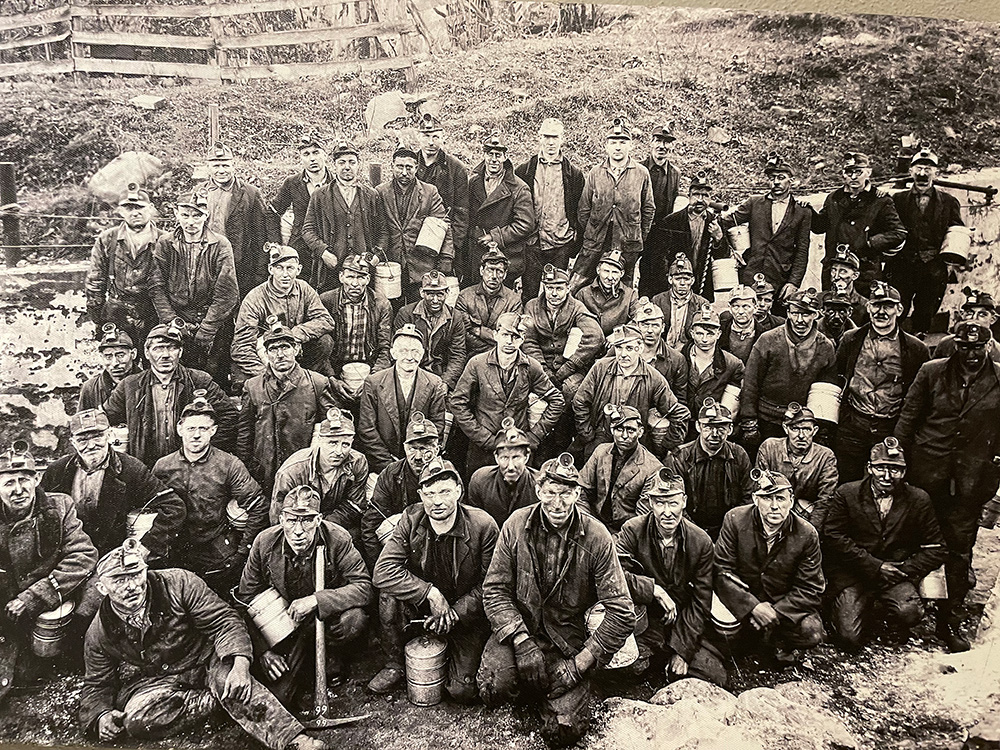FEATURED STORY
125 Years of Coal
Mining Holds Deep Significance for Alum and University
BY MIA CROSS M'03
One hundred and twenty-five years ago, members of the Frostburg community contributed to a campaign organized to raise $2,000 to purchase the land where Frostburg State University now sits. And while that list of distinguished donors was long, it was the local coal miners who contributed a considerable portion of their paychecks to help fund the initiative to offer their children a chance at a higher education. Coal remains a major industry in our local area and throughout the world. Here is the story of one FSU alum who has made coal her career. Profile spoke with Natalie Biggs ’05, Director, Global Head of Thermal Coal Markets at Wood Mackenzie in Annapolis, who oversees the delivery of essential industry data and insightful analysis of thermal coal markets globally. We asked her for some insight into Frostburg, the future of coal and how mining ties into FSU’s rich legacy.

Natalie Biggs '05'
Where are you from?
I have lived in Maryland my whole life, growing up in Calvert County. Frostburg was a popular college choice at my high school, Northern High.
What year did you graduate from FSU and what was your major?
I graduated in 2005 with a major in business economics. I had some great econ professors, including Dr. Anthony Stair, Kiriazis, Neral and Dalton, to name a few. Dr. Stair’s County Economics course was a particular favorite of mine.

Frostburg miners gave money from their paychecks to purchase land where FSU resides today.
What first attracted you to the coal industry?
I just sort of happened upon it after searching for research analyst roles after graduating from Frostburg. I found an open role at a coal consulting firm in Annapolis. However, I am glad I lucked into it since I find the sector fascinating from a research perspective. You get to learn about a variety of interesting subjects – geology, mining engineering, commodity trading, power markets, steel markets, cement, ocean freight, politics, regulation – you name it.
Is the coal industry still a male-dominated field?
There are definitely more men than women, especially in the mining sector. However, in research/consulting, it tends to be more even. I have had fantastic women mentors in the industry over the years. In fact, most of my managers were women. To quote Madeleine Albright, “I have benefited from women that have left the ‘door open and the ladder down’ behind them for me to follow.”
What are your duties and responsibilities as head of Global Thermal Coal Markets?
I manage a team of global analysts, and together we produce research reports on the coal industry. Mainly, we provide forecasts for coal supply, demand and prices through the next 20 years. We run linear programing models to develop our projections. My primary focus now is on thermal coal, which is the coal used for power generation. There is another type called metallurgical coal, which is used for steel making. We supply research and market insights to major banks, coal producers, utilities, governments, environmental groups, transporters, equipment manufacturers, conglomerates, etc.
Do you ever have to go into the field or the mines? If so, can you tell us a little about those experiences?
I have visited many underground mines throughout Appalachia. Appalachia is home to some of the best quality coal in the world, mainly since the Appalachian Mountains are so old and the coal has faced more pressure over time – condensing it down to mostly carbon. One surprising fact about underground mines is that everything is mostly bright white, rather than black tunnels that you see in movies. This is due to the limestone rock dust that they coat the walls with, as a safety precaution to reduce flammability and help prevent black lung disease.
What are the characteristics that made good coal miners back then and are those the same characteristics today?
Over one hundred years ago, coal mining was manual, back-breaking work. The stronger the miner the better, and many were unable to continue in the job past their 40s due to the toll it took on the body. However, nowadays, mining equipment is more advanced and automated; it mainly requires engineers to operate the equipment and a system of conveyor belts to move the coal from the mine. Coal miners are far more educated than they were in the past.
If you could, what would you say to those coal miners who helped fund your alma mater 125 years ago?
I wish they could see how their contribution has changed the town and so many lives for the better. Coal mining in the area faded long ago, but they seeded new prospects for the community to continue to thrive on into the future.
Biggs visits a current day mine with her colleagues.
Do you want to remain in this industry?
I find the coal sector endlessly interesting and wish I could continue in this field until retirement. I am extremely thankful for the career path that it has opened for me. However, the reality is that burning coal is harmful to the environment and its use will gradually decline as governments across the world focus on decarbonization efforts. In the U.S., coal-fired power plants will likely be completely retired by 2040. However, the need for mining in general remains strong, especially as many different types of metals will be needed to supply the green energy transition (each of which will have a need for consulting and research). I will likely switch to researching other mined commodities at some point.
Do you think that it is important that today’s students know the importance of the Frostburg coal miners’ legacy and contribution to FSU?
This question reminds me of the butterfly effect. My decision to go to Frostburg has likely had profound effects on the course of my life and career so far. However, it is crazy to think about how different so many people’s lives might have been if these miners had not supported FSU. I think it is important to recognize and appreciate everything that contributed to who and where you are today.

